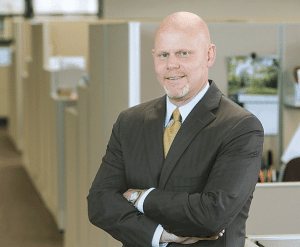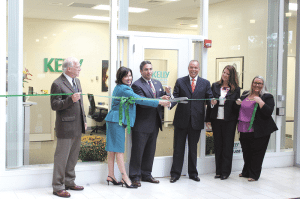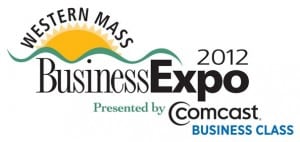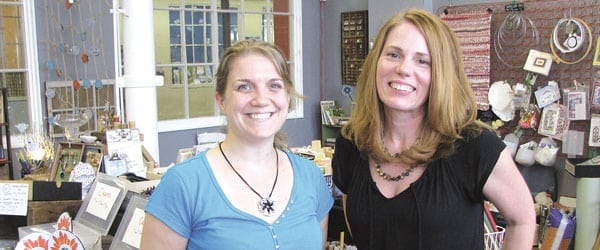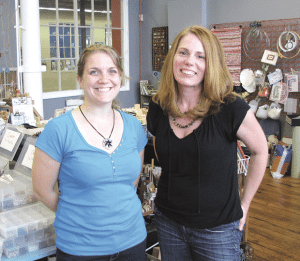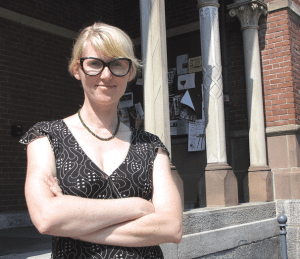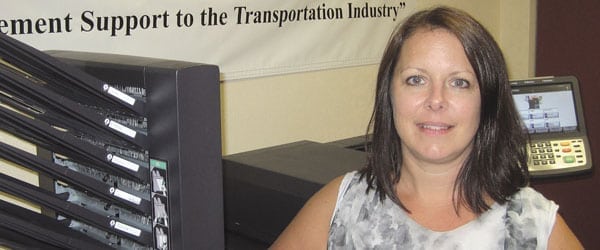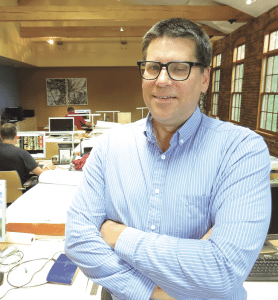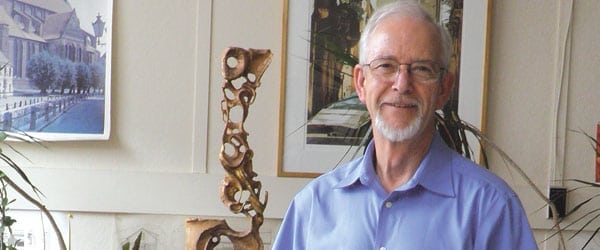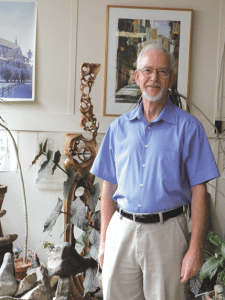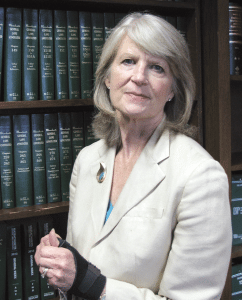The following real estate transactions (latest available) were compiled by Banker & Tradesman and are published as they were received. Only transactions exceeding $115,000 are listed. Buyer and seller fields contain only the first name listed on the deed.
FRANKLIN COUNTY
ASHFIELD
646 Plainfield Road
Ashfield, MA 01330
Amount: $183,000
Buyer: Robert Petrizzi
Seller: Richard B. Colby
Date: 08/22/13
228 Steady Lane
Ashfield, MA 01330
Amount: $210,000
Buyer: Theodore Walls
Seller: Tammy L. Graves
Date: 08/23/13
1277 Williamsburg Road
Ashfield, MA 01330
Amount: $265,000
Buyer: Deborah A. Reed
Seller: Anna J. MacNeish
Date: 08/23/13
BERNARDSTON
12 Bald Mountain Road
Bernardston, MA 01337
Amount: $218,900
Buyer: Steven S. Hean
Seller: Laurie Fox
Date: 08/12/13
32 Depot St.
Bernardston, MA 01337
Amount: $130,635
Buyer: Wells Fargo Bank TR
Seller: Dwight S. Barrows
Date: 08/22/13
BUCKLAND
29 Avery Road
Buckland, MA 01338
Amount: $181,000
Buyer: Lisa L. Rubeck
Seller: Linda M. Vight
Date: 08/22/13
27 School St.
Buckland, MA 01338
Amount: $195,500
Buyer: Seth Wynne
Seller: Dale R. Macleod
Date: 08/21/13
CHARLEMONT
399 Legate Hill Road
Charlemont, MA 01339
Amount: $285,000
Buyer: Carrie H. Ferretti
Seller: Lori A. Shulda-Merrigan
Date: 08/19/13
DEERFIELD
14 King Philip Ave.
Deerfield, MA 01373
Amount: $370,000
Buyer: Tatiana A. Goclowski
Date: 08/23/13
ERVING
34 Prospect St.
Erving, MA 01344
Amount: $186,000
Buyer: Scott D. Nicholas
Seller: Eric A. Johnson
Date: 08/23/13
GREENFIELD
740 Bernardston Road
Greenfield, MA 01301
Amount: $395,000
Buyer: Mary P. Watson
Seller: Elliottr Smolensky
Date: 08/19/13
879 Bernardston Road
Greenfield, MA 01301
Amount: $360,000
Buyer: Aaron E. Maxam
Seller: Elise A. Rice IRT
Date: 08/13/13
9 Grinnell St.
Greenfield, MA 01301
Amount: $166,000
Buyer: Mary M. McManus
Seller: Mary M. McManus
Date: 08/14/13
72 Harrison Ave.
Greenfield, MA 01301
Amount: $225,000
Buyer: Charles Herbert
Seller: Bunker IRT
Date: 08/14/13
109 High St.
Greenfield, MA 01301
Amount: $234,500
Buyer: Marjorie D. Sobil
Seller: Jay E. Karetnick
Date: 08/23/13
Lampblack Road
Greenfield, MA 01301
Amount: $119,000
Buyer: James R. Schramel
Seller: Donna R. Proven
Date: 08/23/13
41 Old Albany Road
Greenfield, MA 01301
Amount: $260,000
Buyer: Steven P. Koblinski
Seller: Judith C. Anderson
Date: 08/16/13
LEYDEN
780 Greenfield Road
Leyden, MA 01301
Amount: $305,000
Buyer: Paul R. Fleischman RET
Seller: Mary A. Blackstone
Date: 08/19/13
MONTAGUE
7 Highland Circle
Montague, MA 01376
Amount: $189,000
Buyer: Heidi M. Graves
Seller: Louise E. Traceski
Date: 08/12/13
75 Millers Falls Road
Montague, MA 01376
Amount: $180,000
Buyer: Karen White
Seller: Michael A. Sevene
Date: 08/16/13
56 Turners Falls Road
Montague, MA 01301
Amount: $198,000
Buyer: Bryan T. Niedbala
Seller: Alfred M. Broga
Date: 08/16/13
NORTHFIELD
225 Main St.
Northfield, MA 01360
Amount: $315,000
Buyer: HL Investments LLC
Seller: Northfield Mt. Hermon School
Date: 08/15/13
276 Old Wendell Road
Northfield, MA 01360
Amount: $228,000
Buyer: Julia A. Blyth
Seller: Pamela J. Veith
Date: 08/12/13
SHUTESBURY
366 Leverett Road
Shutesbury, MA 01072
Amount: $182,000
Buyer: Elizabeth A. Loving
Seller: Diane Jacoby
Date: 08/14/13
SUNDERLAND
124 North Silver Lane
Sunderland, MA 01375
Amount: $260,000
Buyer: Sean G. McCallen
Seller: R. B. Trainor
Date: 08/19/13
232 Russell St.
Sunderland, MA 01375
Amount: $285,500
Buyer: Krisha J. Gile
Seller: Larry D. Honeyman
Date: 08/16/13
WHATELY
122 Christian Lane
Whately, MA 01093
Amount: $166,000
Buyer: Katelyn Hallowell
Seller: Karen R. Milch
Date: 08/16/13
251 Long Plain Road
Whately, MA 01093
Amount: $245,000
Buyer: Heidi L. Canalizo
Seller: Neil D. Stairmand
Date: 08/16/13
HAMPDEN COUNTY
AGAWAM
49 Barney St.
Agawam, MA 01001
Amount: $232,000
Buyer: Christopher Malloy
Seller: Kevin Malloy
Date: 08/16/13
597 Barry St.
Agawam, MA 01030
Amount: $232,000
Buyer: Scott R. Pospolita
Date: 08/13/13
60 Beverly Lane
Agawam, MA 01001
Amount: $210,000
Buyer: Richard J. Gamelli
Seller: Raymond E. Berthiaume
Date: 08/15/13
11 Bradford Dr.
Agawam, MA 01030
Amount: $199,900
Buyer: Darren Morace
Seller: Kevin J. Gaffney
Date: 08/16/13
80 Burlington Dr.
Agawam, MA 01030
Amount: $515,000
Buyer: Shaun M. Dwyer
Seller: Ivan Siryk
Date: 08/16/13
13 Campbell Dr.
Agawam, MA 01001
Amount: $167,500
Buyer: Patrick S. O’Hare
Seller: Robert Dyl
Date: 08/16/13
31 Cedar Knoll Dr.
Agawam, MA 01030
Amount: $369,000
Buyer: Michael J. Hutchinson
Seller: Alan L. Ferrigno
Date: 08/19/13
39 Chapin St.
Agawam, MA 01030
Buyer: Greg J. Hammerle
Seller: Christopher M. Izzo
Date: 08/23/13
47 Elm St.
Agawam, MA 01001
Amount: $167,000
Buyer: Geraldo V. Perez
Seller: Janice E. Reynolds
Date: 08/19/13
107 Fairview St.
Agawam, MA 01001
Amount: $160,000
Buyer: Andrea J. Fusick
Seller: Michael G. Fusick
Date: 08/15/13
76 Katherine Dr.
Agawam, MA 01001
Amount: $305,000
Buyer: Marcos Ramirez
Seller: Kevin T. O’Keefe
Date: 08/19/13
132 Liberty St.
Agawam, MA 01030
Amount: $166,000
Buyer: Danny M. Marsili
Seller: Desiree Gribi
Date: 08/12/13
20 Marlene Dr.
Agawam, MA 01030
Amount: $281,000
Buyer: Pamela Camerlin
Seller: Thomas P. Reilly
Date: 08/14/13
214 Maynard St.
Agawam, MA 01030
Amount: $329,000
Buyer: Daniel J. Dangelo
Seller: Steven E. Rovithis
Date: 08/21/13
739 Mill St.
Agawam, MA 01030
Amount: $165,000
Buyer: Jackuline Robinson
Seller: Mary E. Rosati
Date: 08/22/13
30 Pembroke Lane
Agawam, MA 01001
Amount: $390,000
Buyer: Santino U. Valentino
Seller: Kenneth J. Askins
Date: 08/15/13
44 Riverview Ave.
Agawam, MA 01001
Amount: $210,000
Buyer: Stanislav Gvinter
Seller: Langone Realty Corp.
Date: 08/12/13
BLANDFORD
4 Beulah Land Road
Blandford, MA 01008
Amount: $310,000
Buyer: John C. Zalot
Seller: Stephen C. Poteat
Date: 08/16/13
166 Chester Road
Blandford, MA 01008
Amount: $125,000
Buyer: Marjorie C. McNeill
Seller: Melanie Curran
Date: 08/15/13
Crooks Road
Blandford, MA 01008
Amount: $215,000
Buyer: Donna M. Gamble
Seller: Donna M. Gamble
Date: 08/20/13
CHESTER
9 Lynes Road
Chester, MA 01011
Amount: $272,000
Buyer: Jerry L. Paquette
Seller: Kenneth R. Tessier
Date: 08/23/13
CHICOPEE
31 Alvord Ave.
Chicopee, MA 01020
Amount: $157,000
Buyer: Edythe M. Ambroz
Seller: Lisa M. Labrie
Date: 08/15/13
44 Alvord Ave.
Chicopee, MA 01020
Amount: $146,000
Buyer: Wells Fargo Bank
Seller: David J. Fitz
Date: 08/19/13
54 Cambridge St.
Chicopee, MA 01020
Amount: $115,000
Buyer: Ivan Litvac
Seller: Cabott Realty LLC
Date: 08/16/13
147 Grape St.
Chicopee, MA 01013
Amount: $150,000
Buyer: College Of Our Lady of the Elms
Seller: River Valley Counseling
Date: 08/20/13
1213 Grattan St.
Chicopee, MA 01013
Amount: $168,000
Buyer: Nathan H. Leitl
Seller: Richard Lavallee
Date: 08/20/13
37 Hajec Circle
Chicopee, MA 01020
Amount: $183,000
Buyer: Roman Catholic Bishop Of Springfield
Seller: Lucy I. Klaus
Date: 08/12/13
37 Harrington Road
Chicopee, MA 01020
Amount: $139,900
Buyer: Brandon A. Staszko
Seller: Joyce A. Provoda
Date: 08/20/13
393 Irene St.
Chicopee, MA 01020
Amount: $162,000
Buyer: Grazyna Pielecha
Seller: Larry E. Harris
Date: 08/20/13
402 Irene St.
Chicopee, MA 01020
Amount: $160,000
Buyer: Laura E. Lanier
Seller: Irving I. Farber
Date: 08/23/13
193 Loomis Dr.
Chicopee, MA 01020
Amount: $179,000
Buyer: Jennifer L. Fortuna
Seller: Thomas J. Maciolek
Date: 08/14/13
151 Mayflower Ave.
Chicopee, MA 01020
Amount: $300,000
Buyer: Raymond P. Authier
Seller: Premier Home Builders Inc.
Date: 08/13/13
913 McKinstry Ave.
Chicopee, MA 01020
Amount: $166,500
Buyer: Aaliyah Harris
Seller: Kenneth C. Boutin
Date: 08/21/13
186 Murphy Lane
Chicopee, MA 01020
Amount: $158,000
Buyer: Timothy E. Coyle
Seller: Janice B. Bridgman
Date: 08/15/13
469 Oldfield Road
Amount: $122,500
Buyer: Mayte L. Davila
Seller: Robert M. Hastings
Date: 08/13/13
66 Paradise St.
Chicopee, MA 01020
Amount: $148,000
Buyer: Diane M. Borek
Seller: Richard P. Goncalves
Date: 08/20/13
125 Ruskin St.
Chicopee, MA 01020
Amount: $224,600
Buyer: Wheeler RET
Seller: First Central Baptist Church
Date: 08/15/13
29 Sherbrooke St.
Chicopee, MA 01020
Amount: $117,000
Buyer: Luke A. Donahue
Seller: Virginia J. Stasiowski
Date: 08/15/13
1 Tanglewood St.
Chicopee, MA 01020
Amount: $144,800
Buyer: Jeremy Lambert
Seller: Joseph A. Brosseau
Date: 08/23/13
201 Woodcrest Dr.
Chicopee, MA 01020
Amount: $190,000
Buyer: Brian Fernandez
Seller: Robert Shattuck
Date: 08/23/13
EAST LONGMEADOW
12 Canterbury Circle
East Longmeadow, MA 01028
Amount: $362,000
Buyer: Ryan P. Lynch
Seller: Ian Dalton
Date: 08/14/13
Capri Dr.
East Longmeadow, MA 01028
Amount: $139,900
Buyer: Kent Pecoy & Sons Construction
Seller: Bella Vista Land Holdings
Date: 08/12/13
183 Mapleshade Ave.
East Longmeadow, MA 01028
Amount: $185,000
Buyer: Steve Marangoudakis
Seller: Donald K. Fricchione
Date: 08/16/13
251 Mapleshade Ave.
East Longmeadow, MA 01028
Amount: $217,000
Buyer: Christopher J. McMahon
Seller: William T. Carabine
Date: 08/22/13
51 Pilgrim Road
East Longmeadow, MA 01028
Amount: $325,000
Buyer: Christopher M. Gates
Seller: Huan Vanhuynh
Date: 08/22/13
321 Porter Road
East Longmeadow, MA 01028
Amount: $146,000
Buyer: Aimee C. Bihler
Seller: Bianca P. Norton
Date: 08/12/13
76 Redin Dr.
East Longmeadow, MA 01028
Amount: $175,000
Buyer: Stephen M. Extine
Seller: Carol A. Stone
Date: 08/14/13
22 Rogers Road
East Longmeadow, MA 01028
Amount: $150,000
Buyer: Marcy C. Racicot
Seller: Mary L. Haley
Date: 08/12/13
HOLLAND
3 Pine Tree Dr.
Holland, MA 01521
Amount: $264,000
Buyer: Douglas C. Curving
Seller: Dianne B. Snieder
Date: 08/13/13
HOLYOKE
29 Magnolia Ave.
Holyoke, MA 01040
Amount: $159,000
Buyer: Kenneth A. Voorhees
Seller: Agnes M. Connell
Date: 08/21/13
19 Raymond Ave.
Holyoke, MA 01040
Amount: $127,900
Buyer: Michael R. Patenaude
Seller: Florence Savings Bank
Date: 08/23/13
35 Richard Eger Dr.
Holyoke, MA 01040
Amount: $245,000
Buyer: Eric S. Wood
Seller: Coarnelius R. Dreger
Date: 08/16/13
25 Shawmut Ave.
Holyoke, MA 01040
Amount: $500,000
Buyer: Donald Pelletier
Seller: Desrosiers, Leona G., (Estate)
Date: 08/22/13
30 Sunset Road
Holyoke, MA 01040
Amount: $220,000
Buyer: Gerald Connell
Seller: Aldona Cebulak
Date: 08/21/13
LONGMEADOW
939 Converse St.
Longmeadow, MA 01106
Amount: $125,000
Buyer: Jeffrey Kuselias
Seller: Louis J. Concotilli
Date: 08/21/13
99 Deepwoods Dr.
Longmeadow, MA 01106
Amount: $370,000
Buyer: Rick G. Cianfaglione
Seller: E. P. Wagner
Date: 08/22/13
65 Forest Glen Road
Longmeadow, MA 01106
Amount: $396,250
Buyer: Hans J. Vonnahme
Seller: Todd E. Butler
Date: 08/16/13
144 Franklin Road
Longmeadow, MA 01106
Amount: $258,000
Buyer: Timber Development LLC
Seller: S. W. Goddard
Date: 08/22/13
120 Greenacre Ave.
Longmeadow, MA 01106
Amount: $265,000
Buyer: Lindsay B. Burns-Maloni
Seller: Rich G. Cianfaglione
Date: 08/22/13
1656 Longmeadow St.
Longmeadow, MA 01106
Amount: $185,000
Buyer: Anthony E. English
Seller: Mary A. Downey
Date: 08/15/13
17 Merriweather Dr.
Longmeadow, MA 01106
Amount: $310,000
Buyer: Joseph L. Fontaine
Seller: Neil J. Maloney
Date: 08/23/13
157 Pleasantview Ave.
Longmeadow, MA 01106
Amount: $367,500
Buyer: Patricia A. Clark
Seller: Glenn S. Anderson
Date: 08/12/13
58 Shady Side Dr.
Longmeadow, MA 01106
Amount: $399,000
Buyer: Kim D. Tanzer
Seller: Michael A. Zwirko
Date: 08/21/13
LUDLOW
776 Alden St.
Ludlow, MA 01056
Amount: $237,000
Buyer: William B. Crawford
Seller: Shawn D. Asselin
Date: 08/14/13
37 Bristol St.
Ludlow, MA 01056
Amount: $131,500
Buyer: Stephen Sarrasin
Seller: Acasio Almeida
Date: 08/15/13
597 Chapin St.
Ludlow, MA 01056
Amount: $357,000
Buyer: Joao A. Dias
Seller: John E. Ryan
Date: 08/14/13
25 Dale St.
Ludlow, MA 01056
Amount: $232,000
Buyer: Brian H. Martins
Seller: Domingos Joao
Date: 08/12/13
364 East St.
Ludlow, MA 01056
Amount: $195,000
Buyer: Zapgo LLC
Seller: Robin Wdowiak
Date: 08/14/13
50 King St.
Ludlow, MA 01056
Amount: $195,900
Buyer: Ian Premo
Seller: Antonio Carvalho
Date: 08/13/13
721 Moore St.
Ludlow, MA 01056
Amount: $275,000
Buyer: Stephen W. Ricardi
Seller: Joseph P. Cardaropoli
Date: 08/23/13
92 Parkview St.
Ludlow, MA 01056
Amount: $220,000
Buyer: Edward H. Fillion
Seller: Judith G. Landers
Date: 08/23/13
10 Paul Ave.
Ludlow, MA 01056
Amount: $160,000
Buyer: Diane H. Zina
Seller: Shirley H. Casimiro
Date: 08/12/13
MONSON
4 Country Club Dr.
Monson, MA 01057
Amount: $173,250
Buyer: Jeremy Bailey
Seller: Eric M. True
Date: 08/16/13
23 Green St.
Monson, MA 01057
Amount: $134,300
Buyer: FHLM
Seller: Michael P. Sousa
Date: 08/16/13
62 Palmer Road
Monson, MA 01057
Amount: $170,000
Buyer: Thomas C. Sandomierski
Seller: Sergey Savonin
Date: 08/12/13
MONTGOMERY
3 Birch Bluff Road
Montgomery, MA 01085
Amount: $250,000
Buyer: Robert A. Doyle
Seller: Joseph L. Fontaine
Date: 08/23/13
N/A
Montgomery, MA 01085
Amount: $700,000
Buyer: Scarfo Construction Inc.
Seller: Flynn, Eileen T., (Estate)
Date: 08/16/13
Southampton Road
Montgomery, MA 01085
Amount: $140,000
Seller: Scarfo Construction Inc.
Date: 08/16/13
PALMER
4253 Church St.
Palmer, MA 01069
Amount: $217,500
Buyer: US Bank
Seller: David Chamberlain
Date: 08/14/13
2015 East St.
Palmer, MA 01080
Amount: $170,584
Buyer: Wells Fargo Financial
Seller: Patricia A. Narreau
Date: 08/19/13
4415 High St.
Palmer, MA 01069
Amount: $150,000
Buyer: Margaret A. Mileskie
Seller: Eric H. Niergarth
Date: 08/14/13
132 Shearer St.
Palmer, MA 01069
Amount: $198,777
Buyer: FNMA
Seller: Gary E. Hilton
Date: 08/22/13
RUSSELL
570 Pine Hill Road
Russell, MA 01071
Amount: $310,000
Buyer: Shane C. Cekovsky
Seller: Anthony J. Palazzo
Date: 08/22/13
SPRINGFIELD
44 Ashland Ave. #9
Springfield, MA 01119
Amount: $215,000
Buyer: Ya J. Chen
Seller: Kevin J. Czaplicki
Date: 08/14/13
142 Avery St.
Springfield, MA 01119
Amount: $144,282
Buyer: Pati RE Holdings LLC
Seller: Christopher Tiso
Date: 08/14/13
162 Bowles Park
Springfield, MA 01104
Amount: $132,000
Buyer: Jennifer A. Bertolasio
Seller: Courtines, Velma L., (Estate)
Date: 08/22/13
63 Bridle Path Road
Springfield, MA 01118
Amount: $225,000
Buyer: Jess P. Wainscott
Seller: David S. Burnett
Date: 08/19/13
158 Bridle Path Road
Springfield, MA 01118
Amount: $166,000
Buyer: Brian D. Coelho
Seller: Sarah E. Bryson
Date: 08/15/13
102 Chalmers St.
Springfield, MA 01118
Amount: $157,000
Buyer: Neslie R. Pryce
Seller: Norman C. Michaels
Date: 08/20/13
274 Christopher Dr.
Springfield, MA 01119
Amount: $186,900
Buyer: Aminah M. Sallu-Lukulay
Seller: 50 By 50 REO 3 LLC
Date: 08/23/13
650 Cooley St.
Springfield, MA 01128
Amount: $117,500
Buyer: Sarai Andrades
Seller: Richard S. Harty
Date: 08/16/13
41 Copeland St.
Springfield, MA 01108
Amount: $164,936
Buyer: FHLM
Seller: William J. Sullivan
Date: 08/12/13
14 Fairfield St.
Springfield, MA 01108
Amount: $169,900
Buyer: Kaelan A. Rhiannon
Seller: Thomas J. Rowland
Date: 08/12/13
38 Granger St.
Springfield, MA 01119
Amount: $234,000
Buyer: Kiyota Woods
Seller: Luke E. Hunter
Date: 08/19/13
116 Hampden St.
Springfield, MA 01151
Amount: $159,397
Buyer: MHFA
Seller: Luis A. Feliciano
Date: 08/21/13
96 Kensington Ave.
Springfield, MA 01108
Amount: $900,000
Buyer: Hung T. Tu
Seller: Long K. Le
Date: 08/23/13
1091 Main St.
Springfield, MA 01103
Amount: $350,000
Buyer: 1095 Main Street IRT
Seller: NEC Family Enterprises 2
Date: 08/20/13
N/A
Springfield, MA 01119
Amount: $172,300
Buyer: Emily K. Herring
Seller: Daniel A. Britt
Date: 08/16/13
5 Nokomis St.
Springfield, MA 01109
Amount: $127,000
Buyer: Craig A. Belanger
Seller: Earl H. Thibodeau
Date: 08/16/13
55 Oak St.
Springfield, MA 01109
Amount: $130,000
Buyer: Jose L. Pedro
Seller: Maria R. Fortunato
Date: 08/23/13
30 Prentice St.
Springfield, MA 01104
Amount: $136,900
Buyer: Brenda S. Davis
Seller: Carlos L. Melendez
Date: 08/16/13
33 Rathbun St.
Springfield, MA 01104
Amount: $155,000
Buyer: Luis Cotto
Seller: Deborah L. Scharmann
Date: 08/23/13
23 Slater Ave.
Springfield, MA 01119
Amount: $166,000
Buyer: Travis R. Vaz
Seller: James M. Lage
Date: 08/14/13
16 Sunapee St.
Springfield, MA 01108
Amount: $169,000
Buyer: Lissette Martinez
Seller: William Raleigh
Date: 08/20/13
253 Sunrise Terrace
Springfield, MA 01119
Amount: $150,000
Buyer: Raymond Masso
Seller: Rosa Jusino
Date: 08/20/13
64 Treetop Ave.
Springfield, MA 01118
Amount: $195,125
Buyer: HSBC Mortgage Svcs. Inc.
Seller: Anthony L. Perry
Date: 08/21/13
36 Village Road
Springfield, MA 01129
Amount: $135,000
Buyer: Dawn M. Chaffee
Seller: Andrew C. Bordoni
Date: 08/20/13
19 Warner St.
Springfield, MA 01108
Amount: $218,000
Buyer: Luxiana Property LLC
Seller: Marie C. Rigaud
Date: 08/22/13
30 Wells St.
Springfield, MA 01104
Amount: $170,000
Buyer: Christopher Edge
Seller: Courtside Of Springfield
Date: 08/15/13
1425 Wilbraham Road
Springfield, MA 01119
Amount: $125,000
Buyer: Alfred P. Cola
Seller: Robert L. Craig
Date: 08/16/13
201 Windemere St.
Springfield, MA 01104
Amount: $115,000
Buyer: Crystal L. Roy
Seller: Teresa A. Klein
Date: 08/23/13
107 Winton St.
Springfield, MA 01118
Amount: $142,500
Buyer: Cynthia R. Carbonneau
Seller: Robert J. Bousquet
Date: 08/23/13
178 Wollaston St.
Springfield, MA 01119
Amount: $136,000
Buyer: JV Properties Inc.
Seller: Martin A. Derrick
Date: 08/23/13
5 Woodland Road
Springfield, MA 01129
Amount: $237,000
Buyer: Nathaniel J. Gilmore
Seller: My Ron A. Hatchett
Date: 08/16/13
SOUTHWICK
7 Deer Run
Southwick, MA 01077
Amount: $443,946
Buyer: FNMA
Seller: Richard E. Tersavich
Date: 08/16/13
16 Foster Road
Southwick, MA 01077
Amount: $300,000
Buyer: Jaydub LLC
Seller: Russell L. Ramah
Date: 08/23/13
313 Granville Road
Southwick, MA 01077
Amount: $350,000
Buyer: Joseph M. Lemoine
Seller: Louise R. Lamountain
Date: 08/15/13
5 Revere Road
Southwick, MA 01077
Amount: $205,000
Buyer: Christina L. Abbondanza
Seller: Ronald A. Teal
Date: 08/15/13
18 Sterrett Dr.
Southwick, MA 01077
Amount: $365,900
Buyer: Christopher R. Foreman
Seller: Ronald A. Nadeau
Date: 08/14/13
WALES
11 Main St.
Wales, MA 01081
Amount: $139,000
Buyer: Robert B. MacDonald
Seller: Paul Vessio
Date: 08/13/13
WESTFIELD
45 Apple Blossom Lane
Westfield, MA 01085
Amount: $221,000
Buyer: Brian R. Broderick
Seller: Sheila A. Lambert
Date: 08/16/13
41 Bailey Dr.
Westfield, MA 01085
Amount: $330,000
Buyer: Melissa A. Glynn
Seller: Scarfo Construction Inc.
Date: 08/21/13
90 City View Blvd
Westfield, MA 01085
Amount: $220,000
Buyer: Brian C. Miller
Seller: Paul P. Nowak
Date: 08/23/13
19 Eastview Dr.
Westfield, MA 01085
Amount: $126,500
Buyer: SSMG LLC
Seller: Thomas R. Webster
Date: 08/23/13
6 Fowler St.
Westfield, MA 01085
Amount: $150,000
Buyer: Rafael R. Maldonado
Seller: Ashlea R. Miller
Date: 08/23/13
78 Granville Road #8
Westfield, MA 01085
Amount: $326,298
Buyer: Karen M. Regan
Seller: Granville Road LLC
Date: 08/23/13
80 Highland Ave.
Westfield, MA 01085
Amount: $225,000
Buyer: Michael P. Sadowski
Seller: Elizabeth A. Butcher
Date: 08/23/13
33 King St.
Amount: $137,500
Buyer: Robert Daigneault
Seller: Steven A. Andrews
Date: 08/20/13
125 Montgomery St.
Westfield, MA 01085
Amount: $201,637
Buyer: US Bank
Seller: Patricia M. Tower
Date: 08/16/13
160 North Road
Westfield, MA 01085
Amount: $273,500
Buyer: Joel S. Mollison
Seller: Deboroah S. Harris
Date: 08/20/13
215 Notre Dame St.
Westfield, MA 01085
Amount: $154,635
Buyer: Andrew H. Joseph
Seller: Michael P. Sadowski
Date: 08/23/13
7 Phyllis Lane
Westfield, MA 01085
Amount: $268,000
Buyer: Julieann L. Schortmann
Seller: Kenneth L. Ridley
Date: 08/15/13
139 Springdale Road
Westfield, MA 01085
Amount: $135,600
Buyer: Robert A. Gauthier
Seller: George J. Fitch
Date: 08/23/13
33 Squawfield Road
Westfield, MA 01085
Amount: $252,500
Buyer: Gregory A. Denys
Seller: Marcel H. Frere
Date: 08/13/13
74 Westwood Dr.
Westfield, MA 01085
Amount: $227,000
Buyer: James Dinopoulos
Seller: Paul Smith
Date: 08/15/13
83 Wyben Road
Westfield, MA 01085
Amount: $190,000
Buyer: Arlene E. Bednaz
Seller: Richard P. O’Connor
Date: 08/19/13
WILBRAHAM
6 Cedar Ridge Dr.
Wilbraham, MA 01095
Amount: $419,134
Buyer: Richard A. Charpentier
Seller: Mile Oak Land Holdings LLC
Date: 08/12/13
5 Laurel Lane
Wilbraham, MA 01095
Amount: $440,000
Buyer: David S. Burnett
Seller: Steven M. Sady
Date: 08/19/13
25 Rochford Dr.
Wilbraham, MA 01095
Amount: $240,000
Buyer: Gregory Bernat
Seller: William R. Cusson
Date: 08/23/13
26 W. Colonial Road
Wilbraham, MA 01095
Amount: $398,000
Buyer: Bryand E. Brenes
Seller: Charles K. Abro
Date: 08/20/13
WEST SPRINGFIELD
37 Avondale Ave.
West Springfield, MA 01089
Amount: $158,000
Buyer: Lal Khadka
Seller: Keith D. Bowes
Date: 08/14/13
29 Bowers St.
West Springfield, MA 01089
Amount: $130,000
Buyer: Joseph Machnecz
Seller: Rosann Desrosiers
146 City View Ave.
West Springfield, MA 01089
Amount: $170,000
Buyer: Olga I. Lopez
Seller: Dickson, Dorothy M., (Estate)
Date: 08/19/13
184 Laurel Road
West Springfield, MA 01089
Amount: $235,000
Buyer: Jacqueline L. Bell
Seller: Diane E. Gallup
Date: 08/16/13
Mulcahy Dr. #22
West Springfield, MA 01089
Amount: $145,000
Buyer: David J. Piacentini
Seller: Francis Wheeler Construction
Date: 08/16/13
90 Nelson Circle
West Springfield, MA 01089
Amount: $174,900
Buyer: Nicholas A. Bull
Seller: Daniel J. Garrity
Date: 08/12/13
492 Prospect Ave.
West Springfield, MA 01089
Amount: $3,250,000
Buyer: MWF Realty LLC
Seller: Fountain Prospect Realty
Date: 08/14/13
166 Robinson Road
West Springfield, MA 01089
Amount: $169,500
Buyer: Patricia A. Schufreider
Seller: William J. Powers
Date: 08/12/13
68 Smyrna St.
West Springfield, MA 01089
Amount: $166,000
Buyer: Sarabeth G. Caplette
Seller: Matthew J. Scytkowski
Date: 08/14/13
105 Van Horn St.
West Springfield, MA 01089
Amount: $204,900
Buyer: Matthew J. Scytkowski
Seller: Ryan P. Lynch
Date: 08/14/13
HAMPSHIRE COUNTY
AMHERST
104 Dana St.
Amherst, MA 01002
Amount: $470,000
Buyer: Rosemary A. Cowell
Seller: Rachel R. Hexter
Date: 08/22/13
623 East Pleasant St.
Amherst, MA 01002
Amount: $255,000
Buyer: Michaeel E. Williamson
Seller: Judith R. Ashkin
Date: 08/19/13
75 Larkspur Dr.
Amherst, MA 01002
Amount: $545,000
Buyer: Marc S. Osten
Seller: David G. Doctor
Date: 08/15/13
Leverett Road
Amherst, MA 01002
Amount: $116,000
Buyer: Joslad & Associates PC
Seller: Bernard F. Mikelis LT
Date: 08/14/1
27 South Prospect St.
Amherst, MA 01002
Amount: $362,545
Buyer: Benjamin Beiley
Seller: Donald S. Pitkin RET
Date: 08/20/13
BELCHERTOWN
17 2 Ponds Road
Belchertown, MA 01007
Amount: $390,000
Buyer: Himanshu Patel
Seller: Whitney Mollica
Date: 08/22/13
80 Granby Road
Belchertown, MA 01007
Amount: $338,000
Buyer: Jonathan W. Ritter
Seller: Carriage Town Homes LLC
Date: 08/20/13
20 Hemlock Hollow
Belchertown, MA 01007
Amount: $292,573
Buyer: Freedom Mortgage Corp.
Seller: Kevin M. Hughes
Date: 08/16/13
141 Metacomet St.
Belchertown, MA 01007
Amount: $130,000
Buyer: Daniel A. Bergeron
Seller: William M. Booth
Date: 08/15/13
425 Michael Sears Road
Belchertown, MA 01007
Amount: $320,000
Buyer: Ronald T. Galen
Seller: 425 Sears TR
Date: 08/19/13
469 Michael Sears Road
Belchertown, MA 01007
Amount: $240,000
Buyer: Wendy A. Bowers
Seller: Joseph M. Lemoine
Date: 08/15/13
196 Old Enfield Road
Amount: $468,000
Buyer: David R. O’Brien
Seller: Gordon Bjorkman
Date: 08/23/13
203 Orchard St.
Belchertown, MA 01007
Amount: $155,000
Buyer: Jeffrey N. Cosgrove
Seller: Eileen A. Casella
Date: 08/23/13
97 South Washington St.
Belchertown, MA 01007
Amount: $268,500
Buyer: Katherine Bousquet
Seller: Michael J. Czepiel
Date: 08/16/13
46 Wilson Road
Belchertown, MA 01007
Amount: $225,000
Buyer: Peter J. Czapienski
Seller: David P. Jones
Date: 08/16/13
CHESTERFIELD
228 Sugar Hill Road
Chesterfield, MA 01012
Amount: $215,000
Buyer: Thomas S. Vincent
Seller: Diane M. Pfisterer
Date: 08/16/13
EASTHAMPTON
82 Ferry St.
Easthampton, MA 01027
Amount: $165,000
Buyer: Megan R. Scott
Seller: Jeremy A. Hebert
Date: 08/16/13
238 Hendrick St.
Easthampton, MA 01027
Amount: $215,000
Buyer: Paul J. Wysocki
Seller: Jean K. Canon
Date: 08/16/13
1 Lovefield St.
Easthampton, MA 01027
Amount: $340,000
Buyer: Triple C LLC
Seller: Liberty Field LLC
Date: 08/14/13
4 Valley Lane
Easthampton, MA 01027
Amount: $283,000
Buyer: John J. Mingrone
Seller: Michael J. Schrauben
Date: 08/13/13
13 West St.
Easthampton, MA 01027
Amount: $287,500
Buyer: Shirlee B. Williams
Seller: Suzanne O’Donnell
Date: 08/22/13
GRANBY
240 Carver St.
Granby, MA 01033
Amount: $260,000
Buyer: Stephanie N. Granger
Seller: Stephen J. Guenette
Date: 08/15/13
499 East State St.
Granby, MA 01033
Amount: $345,000
Buyer: Denis Laflamme
Seller: Jacqueline Bell
Date: 08/16/13
Maximilian Dr.
Granby, MA 01033
Amount: $145,000
Buyer: CIL Realty of Mass. Inc.
Seller: East State Street NT
Date: 08/16/13
204 School St.
Granby, MA 01033
Amount: $179,000
Buyer: Joshua N. Broussard
Seller: Jeanne Yocum
Date: 08/20/13
HADLEY
7 Indian Pipe Dr.
Hadley, MA 01035
Amount: $699,000
Buyer: Ajla Aksamija
Seller: Bercume Construction LLC
Date: 08/23/13
26 Mount Warner Road
Hadley, MA 01035
Amount: $385,000
Buyer: Jeffrey T. Reynolds
Seller: Gideon Y. Freudmann
Date: 08/22/13
36 North Maple St.
Hadley, MA 01035
Amount: $267,500
Buyer: Austen Iglehart
Seller: Kazimiera Szlaban
Date: 08/23/13
108 Rocky Hill Road
Hadley, MA 01035
Amount: $295,000
Buyer: Bruce D. Montague
Seller: Elaine Aldrich
Date: 08/14/13
23 Rocky Hill Road
Hadley, MA 01035
Amount: $297,500
Buyer: Dennis C. Morin
Seller: Kathleen Miller
Date: 08/15/13
8 Wampanoag Dr.
Hadley, MA 01035
Amount: $325,000
Buyer: Quentin S. Amrani
Seller: Christopher C. Slack
Date: 08/16/13
HATFIELD
8 Woodridge Circle
Hatfield, MA 01038
Amount: $525,000
Buyer: Honora G. Gordon
Seller: John H. Zieminski
Date: 08/19/13
HUNTINGTON
70 Goss Hill Road
Huntington, MA 01050
Amount: $190,000
Buyer: Garrett T. Barsalou
Seller: Kelso, Edward A., (Estate)
Date: 08/20/13
138 Pond Brook Road
Huntington, MA 01050
Amount: $285,000
Buyer: William C. Madden
Seller: Nettler Green LT
Date: 08/15/13
NORTHAMPTON
621 Burts Pit Road
Northampton, MA 01062
Amount: $390,000
Buyer: Christopher J. Hurn
Seller: Harry L. Hoar
Date: 08/12/13
86 Cahillane Terrace
Northampton, MA 01062
Amount: $115,000
Buyer: Brian Campedelli
Seller: Matthew L. Owen
Date: 08/13/13
262 Crescent St.
Northampton, MA 01060
Amount: $535,000
Buyer: Patrice M. Sabach
Seller: Christopher Laflamme
Date: 08/15/13
22 Dickinson St.
Northampton, MA 01060
Amount: $356,000
Buyer: Krista L. Carothers
Seller: Nathan S. Korza
Date: 08/23/13
100 Front St.
Northampton, MA 01053
Amount: $274,000
Buyer: Laurie B. Foley
Seller: Thomas F. Quinn
Date: 08/19/13
35 Hatfield St.
Northampton, MA 01060
Amount: $220,000
Buyer: Mohamed R. Abdulazeez
Seller: Henry J. Kowalski
Date: 08/19/13
33 Harlow Ave.
Northampton, MA 01060
Amount: $190,000
Buyer: Andrew B. Dahlberg
Seller: Janet R. Dahlberg
Date: 08/16/13
96 Island Road
Northampton, MA 01060
Amount: $186,000
Buyer: Gail F. Lysiak
Seller: R. Jalbert&M Sullivan RET
Date: 08/12/13
100 Maple Ridge Road
Northampton, MA 01062
Amount: $575,500
Buyer: Matthew E. Page
Seller: Emil J. Kobylarz
107 Massasoit St.
Northampton, MA 01060
Amount: $353,000
Buyer: Tor A. Krogius
Seller: Lairie B. Foley
Date: 08/19/13
111 Nonotuck St.
Northampton, MA 01062
Amount: $387,500
Buyer: Bruce Frankel
Seller: Sara R. Page
Date: 08/16/13
140 Pine St.
Northampton, MA 01062
Amount: $321,500
Buyer: 40 Main Street LLC
Seller: City Of Northampton
Date: 08/22/13
110 Prospect Ave.
Northampton, MA 01060
Amount: $440,000
Buyer: Nathan S. Korza
Seller: Sarah C. Barrett
Date: 08/19/13
405 Ryan Road
Northampton, MA 01062
Amount: $250,000
Buyer: C. P. Andrikidis
Seller: John J. Glenowicz
Date: 08/16/13
114 South Main St.
Northampton, MA 01062
Amount: $690,000
Buyer: Charlene E. Choi
Seller: Nancy W. Denig
168 South Main St.
Northampton, MA 01062
Amount: $450,000
Buyer: Scott E. Evans
Seller: Melitta Carnevale
Date: 08/13/13
3 Tyler Court
Northampton, MA 01060
Amount: $900,000
Buyer: Cheryl A. Jacques
Seller: MLG RT
Date: 08/15/13
93 Washington Ave.
Northampton, MA 01060
Amount: $538,000
Buyer: William J. Corwin
Seller: Amy B. Morse
Date: 08/15/13
PELHAM
47 Arnold Road
Pelham, MA 01002
Amount: $375,000
Buyer: Mark Lange
Seller: Joan S. Leavitt
Date: 08/21/13
PLAINFIELD
64 Old South St.
Plainfield, MA 01070
Amount: $185,000
Buyer: Michael R. Packard
Seller: Joseph Freeland
Date: 08/15/13
SOUTH HADLEY
47 Charon Terrace
South Hadley, MA 01075
Amount: $200,000
Buyer: Jonathan S. Szymonik
Seller: Ian D. Premo
Date: 08/12/13
104 Granby Road
South Hadley, MA 01075
Amount: $233,000
Buyer: Farrah Matta
Seller: Norma I. Resto
Date: 08/23/13
16 Linda St.
South Hadley, MA 01075
Amount: $180,000
Buyer: Bryan J. Lynes
Seller: Eleanor Dauphinais IRT
Date: 08/20/13
520 Newton St.
South Hadley, MA 01075
Amount: $315,000
Buyer: Bernard D. Gelinas
Seller: Richard Theriault
Date: 08/16/13
11 Silverwood Terrace
South Hadley, MA 01075
Buyer: Nancy A. Dinn
Seller: E. Muriel Allen TR
Date: 08/16/13
70 Woodbridge St.
South Hadley, MA 01075
Amount: $280,000
Buyer: Matthew S. Bertuzzi
Seller: Andrew Clendinneng
Date: 08/23/13
193 Woodbridge St.
South Hadley, MA 01075
Amount: $258,500
Buyer: Carole A. Camp
Seller: Jihn W. Malone
Date: 08/15/13
SOUTHAMPTON
8 Bluemer Road
Southampton, MA 01073
Amount: $219,648
Buyer: FNMA
Seller: Wayne F. Demers
Date: 08/23/13
5 Buchanan Circle
Southampton, MA 01073
Amount: $270,000
Buyer: Vincent S. Turgeon
Seller: John Zalot
Date: 08/16/13
42 Line St.
Southampton, MA 01073
Amount: $250,000
Buyer: Angelica F. Trenholm
Seller: Carl E. Osepowicz
Date: 08/22/13
53 Moose Brook Road
Southampton, MA 01073
Amount: $219,500
Buyer: Donald N. Bernier
Seller: David L. Neal
Date: 08/15/13
27 Mountain View Circle
Southampton, MA 01073
Amount: $168,500
Buyer: Evan R. Huff
Seller: James J. Jackowski
Date: 08/23/13
12 Rattle Hill Road
Southampton, MA 01073
Amount: $122,000
Buyer: John Dafonte
Seller: Michael L. McKnight
Date: 08/19/13
WARE
270 Old Gilbertville Road
Ware, MA 01082
Amount: $215,000
Buyer: Gregory W. Eaton
Seller: Melissa C. Martin
Date: 08/12/13
111 Walker Road
Ware, MA 01082
Amount: $318,500
Buyer: Robert E. Provencal
Seller: Provencal Demer NT
Date: 08/16/13
WESTHAMPTON
148 Northwest Road
Westhampton, MA 01027
Amount: $296,000
Buyer: David L. Popham
Seller: Joseph Hvishaway
Date: 08/19/13
WILLIAMSBURG
20 Petticoat Hill Road
Williamsburg, MA 01096
Amount: $335,000
Buyer: John W. Selfridhe
Seller: Briam W. Breed
Date: 08/20/13




